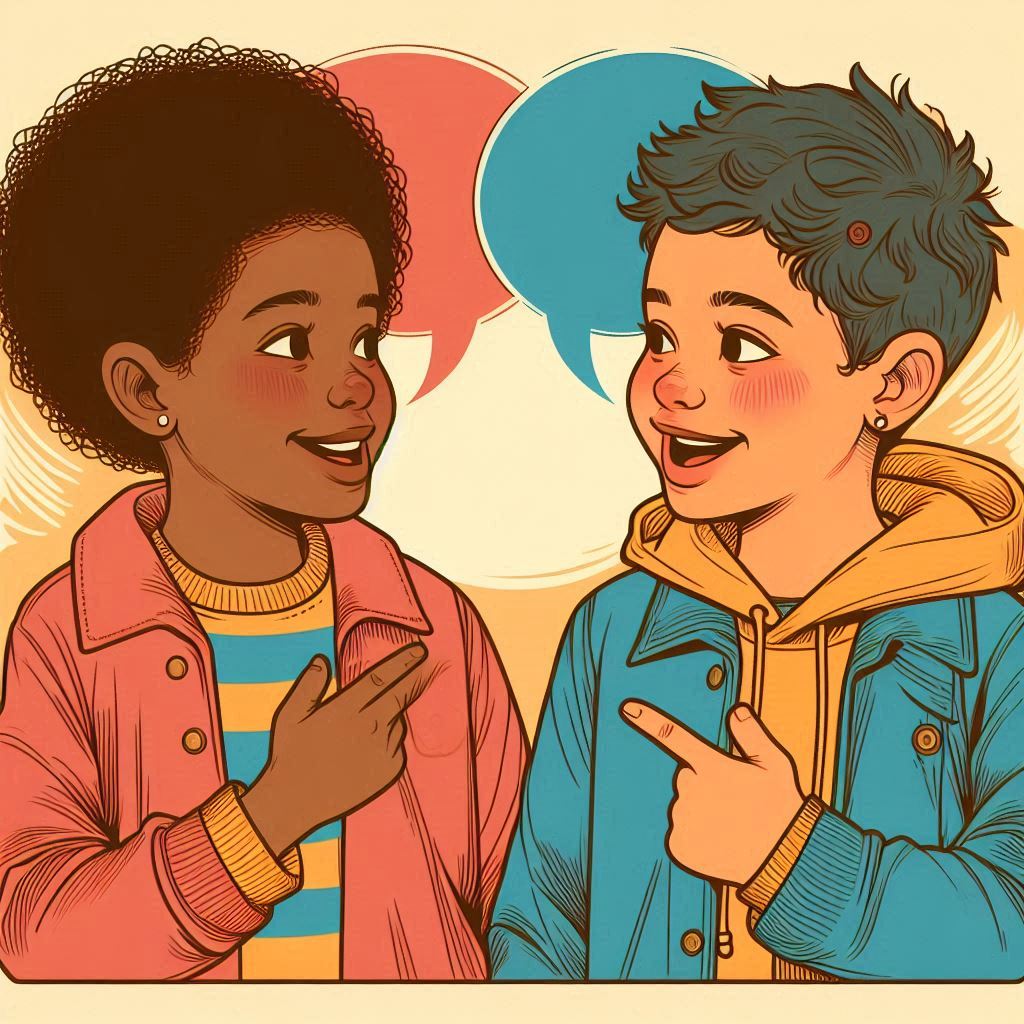Social Reciprocity in Neurodivergent Children

Social reciprocity is a fancy term for the back-and-forth interactions we have with others. It’s about understanding social cues, like when someone smiles or frowns, and responding in a way that makes sense. This skill helps kids build friendships, communicate better, and feel more connected in social settings. While it usually comes naturally to neurotypical kids, neurodivergent children, such as those with Autism Spectrum Disorder (ASD) or ADHD, often need a little extra support to develop these skills. Understanding social reciprocity and knowing how to help neurodivergent children improve can make a big difference in their lives.
What is Social Reciprocity?
Social reciprocity is all about the give-and-take in conversations and social interactions. It involves recognising and responding to things like body language, facial expressions, and tone of voice. It also means sharing your own thoughts and feelings appropriately.
For example, if someone smiles at you, you might smile back. Or, if a friend seems upset, you might offer support. These simple exchanges are what build relationships and help kids feel connected to the people around them.
Social Reciprocity in Neurotypical Children
In neurotypical children, social reciprocity usually develops naturally. From a young age, they begin to pick up on social cues, like smiling when someone smiles at them or responding when someone talks to them. As they grow, they learn to take turns in conversations, show interest in what others are feeling, and play well with others (Guralnick, 1999). These skills help them navigate social situations with ease.
Social Reciprocity in Neurodivergent Children
For neurodivergent children, social reciprocity can be a little more challenging. For example, children with Autism Spectrum Disorder (ASD) may struggle to recognise social cues, such as when someone is trying to talk to them or when it’s time to take turns in a conversation. This can sometimes make social interactions confusing or overwhelming for them (American Psychiatric Association, 2013).
Children with ADHD may face different challenges. They might be impulsive and interrupt conversations or have trouble staying focused, which can make it hard for them to fully engage in the back-and-forth flow of social interactions (Kofler et al., 2018).
How to Help Neurodivergent Children Develop Social Reciprocity
While social reciprocity may not come as easily to neurodivergent children, there are many ways to help them develop these skills. Here are some practical strategies:
- Modelling Social Interactions
Neurodivergent children often benefit from seeing social interactions in action. This means showing them how to respond to social cues by modelling behaviours like taking turns in a conversation or using polite phrases. You can even role-play different social scenarios with them to help them understand what’s expected (Gray, 2010).
- Using Visual Supports
Visual aids, such as charts or cue cards, can help children follow the steps of a social interaction. For example, you could create a visual guide that shows the process of greeting someone, asking a question, listening, and then responding. This helps break down social interactions into easy-to-follow steps (Hodgdon, 1995).
- Structured Play Opportunities
Providing structured play opportunities gives neurodivergent children a chance to practice social reciprocity in a controlled setting. Activities like board games, which require taking turns, can help reinforce the give-and-take of social interactions. You can also set up playdates with children who can model positive social behaviour (Kasari et al., 2012).
- Positive Reinforcement
Encouraging neurodivergent children when they successfully engage in social interactions is important. Praise them when they take turns or respond to social cues, and give them small rewards to motivate them to keep practicing. Consistent feedback helps reinforce what successful interactions look like (Koegel et al., 2012).
- Therapeutic Interventions
Therapies such as speech and language therapy, social skills groups, or play therapy can provide neurodivergent children with targeted help in developing social reciprocity. These therapies break down social interactions into manageable steps and use positive reinforcement to build skills (Schreibman et al., 2015).
Conclusion
Social reciprocity plays a key role in helping kids connect with others and navigate the social world. While it may come naturally to neurotypical children, neurodivergent kids often need extra support to develop these skills. By modelling social interactions, using visual aids, creating structured play opportunities, and offering positive reinforcement, we can help neurodivergent children build the social reciprocity skills they need to thrive in social situations.
References
American Psychiatric Association. (2013). Diagnostic and statistical manual of mental disorders (5th ed.). Arlington, VA: American Psychiatric Publishing.
Gray, C. (2010). The new social story book. Arlington, TX: Future Horizons.
Guralnick, M. J. (1999). The nature and meaning of social integration for young children with mild developmental delays in inclusive settings. Journal of Early Intervention, 22(1), 70–86. https://doi.org/10.1177/105381519902200106
Hodgdon, L. Q. (1995). Visual strategies for improving communication: Practical supports for school and home. Troy, MI: QuirkRoberts Publishing.
Kasari, C., Rotheram-Fuller, E., Locke, J., & Gulsrud, A. (2012). Making the connection: Randomized controlled trial of social skills at school for children with autism spectrum disorders. Journal of Child Psychology and Psychiatry, 53(4), 431-439. https://doi.org/10.1111/j.1469-7610.2011.02493.x
Kofler, M. J., Spiegel, J. A., Austin, K. E., Irwin, L. N., Soto, E. F., & Sarver, D. E. (2018). Are episodic buffer processes intact in ADHD? Evidence from visual and verbal working memory tasks. Neuropsychology, 32(3), 297–310. https://doi.org/10.1037/neu0000417
Koegel, R. L., Vernon, T. W., Koegel, L. K., Koegel, B. L., & Paullin, A. W. (2012). Improving social engagement and initiations between children with autism spectrum disorder and their peers in inclusive settings. Journal of Positive Behavior Interventions, 14(4), 220-227. https://doi.org/10.1177/1098300712437042
Schreibman, L., Dawson, G., Stahmer, A. C., Landa, R., Rogers, S. J., McGee, G. G., … & Halladay, A. (2015). Naturalistic developmental behavioral interventions: Empirically validated treatments for autism spectrum disorder. Journal of Autism and Developmental Disorders, 45(8), 2411-2428. https://doi.org/10.1007/s10803-015-2407-8



Leave a Reply